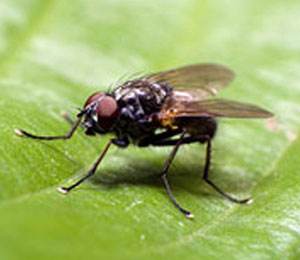
 1
1




 1
1







My books, movies, videos, podcasts, events ... the big collection of paul wheaton stuff!















 3
3




Jared Stanley
http://www.permasapien.com - http://www.youtube.com/permasapien








Attitude of gratitude 




TANSTAAFL
If it ain't broke don't fix it.
When in trouble, or in doubt~
Run about scream and shout.~RAH













Living in Anjou , France,
For the many not for the few
http://www.permies.com/t/80/31583/projects/Permie-Pennies-France#330873
 1
1




 2
2




"You must be the change you want to see in the world." "First they ignore you, then they laugh at you, then they fight you, then you win." --Mahatma Gandhi
"Preach the Gospel always, and if necessary, use words." --Francis of Assisi.
"Family farms work when the whole family works the farm." -- Adam Klaus
 1
1









Ask me about food.
How Permies.com Works (lots of useful links)






Check out my newest project at http://www.stadtfarm.com http://www.twitter.com/stadtfarms or https://www.facebook.com/StadtFarm/




Every day, every season there is change, something new to observe, and constant learning. Permaculture has the dimensions of a life-oriented chess game, involving the elements, energy, and the dimensions of both life-forms and building structures (also with political, social, financial, and global implications).






http://www.cloud9farms.com/ - Southern Colorado - Zone 5 (-19*f) - 5300ft elevation - 12in rainfall plus irrigation rights
Dairy cows, "hair" sheep, Kune Kune pigs, chickens, guineas and turkeys




R Scott wrote:A natural bag balm works. Where we got the original recipe: http://www.bulkherbstore.com/Green-Salve-Mix-Organic We make our own in bulk now, for the cows, goats, and us.
Geoff uses what is a "normal" fly treatment method for cattle, but with organic oils instead of chemicals. If you include face strips they do help with face and horn flies, but face flies are tough to control with any method. Face strips in front of the mineral lick help, too. I use essential oil mix that duplicates vinegar of four thieves (geranium would be a good addition).
I thing having a couple cedar trees "pruned" so they can rub under are very helpful. I think the physical ability to rub their eyes is more helpful than the oil mix, actually.




Julia Winter wrote:I mixed commercial Bag Balm with tea tree oil for foot fungus and although it took a couple of days to finally mix together, I did end up with a very nice, very smelly salve. If tea tree oil repels flies, you could try applying that to the key areas. I don't know how long it would last.
Cedarcide is an extraction from texas cedar that smells like a cedar chest and really repels ticks and fleas. It is toxic to cats, not toxic to dogs. I don't know if it is toxic to cattle. It's a very light liquid so I tend to just spray it (like, on the legs and belly of my dog before a day in southern Illinois jungle like summer forest, full of ticks). For a longer lasting application it could probably be mixed with Bag Balm as well.








![Filename: guinea-chicks-1.jpg
Description: [Thumbnail for guinea-chicks-1.jpg]](/t/36829/a/17753/guinea-chicks-1.jpg)
![Filename: guinea-chicks.jpg
Description: [Thumbnail for guinea-chicks.jpg]](/t/36829/a/17754/guinea-chicks.jpg)




My books, movies, videos, podcasts, events ... the big collection of paul wheaton stuff!

















Kelowna, BC
Zone 5
 3
3










http://www.cloud9farms.com/ - Southern Colorado - Zone 5 (-19*f) - 5300ft elevation - 12in rainfall plus irrigation rights
Dairy cows, "hair" sheep, Kune Kune pigs, chickens, guineas and turkeys








Kristie Wheaton wrote:Ok one of the ways i am working on fly issues is with the chickens, an now i have 8, 9week old guinea chicks that hopefully will do wonderfully on eating the darn little flies... ticks... etc
Kristie Wheaton wrote:also i am using the tea tree oil an geranium oil mixed with olive oil, an putting a small amount of natural dish soap to help it stick to the animal better. An it seems to be helping a lot. Along with the d.e. in her grain every day
http://www.cloud9farms.com/ - Southern Colorado - Zone 5 (-19*f) - 5300ft elevation - 12in rainfall plus irrigation rights
Dairy cows, "hair" sheep, Kune Kune pigs, chickens, guineas and turkeys
 1
1




http://www.cloud9farms.com/ - Southern Colorado - Zone 5 (-19*f) - 5300ft elevation - 12in rainfall plus irrigation rights
Dairy cows, "hair" sheep, Kune Kune pigs, chickens, guineas and turkeys
 2
2








My books, movies, videos, podcasts, events ... the big collection of paul wheaton stuff!




paul wheaton wrote:Encourage spiders.
Pecan Media: food forestry and forest garden ebooks
Now available: The Native Persimmon (centennial edition)
 1
1





My books, movies, videos, podcasts, events ... the big collection of paul wheaton stuff!

|
He got surgery to replace his foot with a pig. He said it was because of this tiny ad:
Freaky Cheap Heat - 2 hour movie - HD streaming
https://permies.com/wiki/238453/Freaky-Cheap-Heat-hour-movie
|



